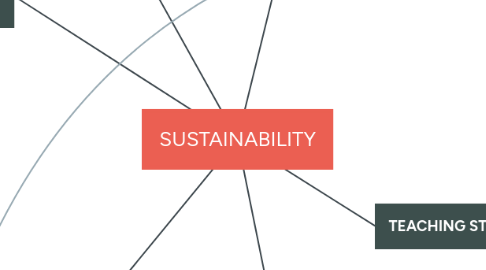
1. LEARNING INTENTION
1.1. Students learn about the societal and environmental impacts of the timber industry and how responsible use of timber can reverse the damage done to the environment. Furthermore, students will gain an understanding of traditional Aboriginal Australian environmental knowledge and perspectives.
1.1.1. Multiculturalism
1.1.2. Diverse perspectives
1.1.3. Contemporary social issues
1.1.3.1. Climate change
2. ASSESSMENT TASK - RESEARCH TASK
2.1. ASSESSMENT TASK
2.2. The world we live in is more fragile than we once thought. Over the past 30 years, it has become painfully obvious that the choices we make as designers and consumers have a real impact on the environment. Fortunately, we are beginning to change our wasteful ways and become more responsible stewards.
2.3. QUESTION 1
2.4. Outline how the use of timber makes a positive contribution to reducing carbon emissions.
2.5. QUESTION 2
2.6. What are the social and ethical considerations in design?
2.7. QUESTION 3
2.8. How did indigenous Australians consider sustainability in relation to timber and natural resources? What strategies did they develop that are, or could be incorporated today.
2.8.1. Potential to discuss racism and the similarities between traditional and western ideas
2.9. QUESTION 4
2.10. State two positives and two negatives of technology in our society in relation to the timber industry. In your opinion, is technological advancement positive for society?
3. RESOURCES
3.1. Community Relationships
3.1.1. School Aboriginal education leaders
3.1.2. Local elders
3.2. Technology
3.2.1. Mindmeister (for timeline)
3.2.2. Canva (for infographic)
3.2.3. Google
3.2.4. Laptops
3.3. Educational resources
3.3.1. Woodworking textbook (Leadbeatter Fourth edition)
3.3.2. Britannica kids - Indigenous Australians and the Environment
3.3.3. Vdeo- What can we learn from Indigenous Australians and their 60,000 years caring for country? https://youtu.be/Z8x1DS2-WSs
3.4. Experience
3.4.1. Permission to explore school grounds for different trees and timbers
4. TEACHING STRATEGIES
4.1. The four resource model
4.1.1. Multmodal
4.2. Cooperative learning
4.3. Direct instruction
4.4. Kinaesthetic learning
4.5. Scaffolded learning
4.6. Local Language(s)
4.7. Differentation
4.7.1. Local languages
4.7.2. Adjusted verbs
4.7.3. Communication style
4.7.4. Behavioural expectations (eye contact etc)
4.7.5. Individual goals
4.8. 8 ways
4.8.1. Story sharing
4.8.2. Community links
4.8.3. Deconstruct, Reconstruct
4.8.4. Non-Linear
4.8.5. Land links
4.8.6. Symbols and Images
4.8.7. Non-verbal
4.8.8. Learning Maps
5. KEY LEARNING AREA
5.1. TECHNOLOGY
5.1.1. Stage 5
5.1.1.1. INDUSTRIAL TECHNOLOGY (TIMBER)
5.1.1.1.1. CROSS-CURRICULUM PRIORITIES
5.1.1.1.2. GENERAL CAPABILITIES
5.1.1.1.3. ADDITIONAL NESA REQUIREMENTS
5.1.1.1.4. OUTCOMES
6. Learning Activities
6.1. Learning Activity One
6.1.1. Teacher begins by telling a story relevant to forestry. Talk about local land clearing and what the land was like when I was growing up in the area. Then talk about what the land might have looked like 5000 years ago. Research and discuss different materials and their respective environmental impacts.
6.2. Learning Activity Two
6.2.1. Create a timeline using Mindmesiter of the evolution of technology in the timber industry, beginning with Indigenous Australians. Students also investigate emerging technologies and envision preferred futures.
6.3. Learning Activity Three
6.3.1. Students create a Canva infographic outlining why plantation timber is better for the environment than rainforest timbers. Also includes a 'did you know section' that teaches viewers about how Indigenous Australians used sustainable practices.
6.4. Learning Activity Four
6.4.1. In groups of three, students investigate different trees found on school grounds, identify them, their Indigenous name and what they are used for today as well what they were used for by Indigenous Australians.
6.4.1.1. Invite local Indigenous community member to give a presentation on Indigenous uses of materials and plants.
